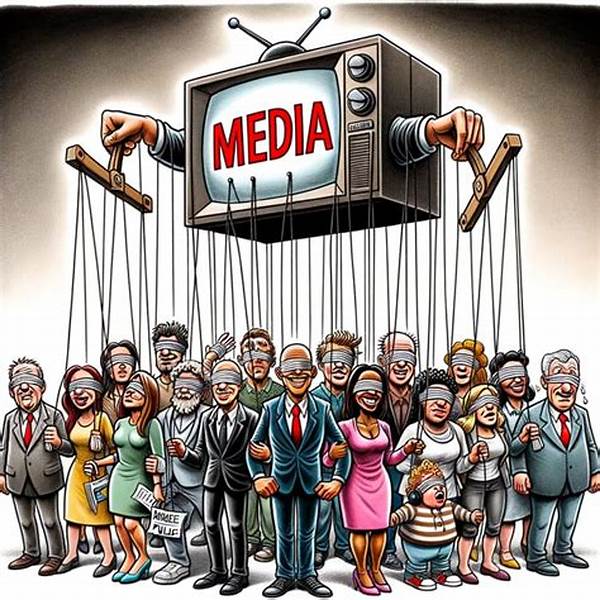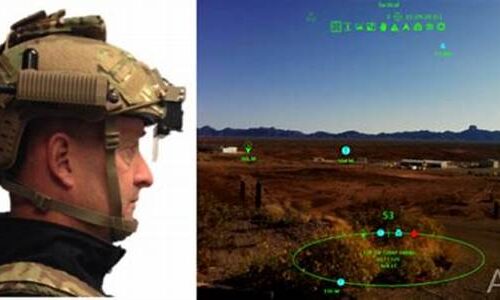The Role of Information Dissemination in Shaping Public Opinion
In the contemporary era, information dissemination via mass media plays a pivotal role in shaping public opinion, specifically concerning wars. Media platforms, ranging from traditional news outlets to social media, become the primary sources of information for the public regarding international conflicts. This substantial reach empowers media organizations to significantly shape the narrative around wars. However, media influence on public perception of wars does not function in isolation; it operates within complex frameworks of political, social, and economic dynamics that also affect public perceptions. Media entities can serve as critical channels for the dissemination of factual reporting, highlight humanitarian perspectives, and provide diverse viewpoints. Still, they can also be conduits for misinformation or biased reporting, which can, in turn, skew public perceptions and influence policy decisions.
Additionally, the portrayal of wars in media can evoke emotional responses, mobilizing public sentiment in various directions. Images of suffering and destruction, for example, can generate widespread public empathy and a desire for humanitarian intervention. Conversely, the framing of opposing factions as threats can exacerbate fear and calls for military engagement. Thus, the media holds a significant power in molding both the emotional and rational aspects of public perception, ultimately impacting the public’s stance on military conflicts.
Historical Context of Media Influence on Conflicts
1. Media influence on public perception of wars has its roots in historical context, tracing back to conflicts like the Vietnam War. The then-nascent television industry broadcast visceral images, challenging governmental narratives and altering public opinion significantly.
2. The advent of radio during World War II marked another pivotal moment. Broadcasts from battlefields and propaganda altered public consciousness, fostering support or dissent based on the narratives conveyed.
3. The Gulf War introduced 24-hour news cycles and live broadcasts. This development intensified media influence on public perception of wars by providing real-time updates and shaping narratives around military strategies and humanitarian crises.
4. Social media now plays a crucial role in disseminating information about conflicts, enabling both journalists and civilians to contribute to the media landscape. This diversification has increased the complexity of media influence on public perception of wars.
5. International media outlets often depict conflicts differently based on geopolitical interests, thus impacting regional and global public opinion by aligning narratives with specific ideological or national interests.
Contemporary Media Platforms and Their Impact
In today’s digital age, contemporary media platforms, including television, online news sites, and social media, serve as the main conduits for information regarding wars. The multiplicity of these platforms means that audiences receive information from a variety of sources, increasing the complexity of media influence on public perception of wars. Social media, in particular, has transformed the landscape, allowing information to spread virally and reach global audiences instantaneously. This immediacy allows for a more dynamic flow of information but also presents challenges in terms of verifying the accuracy and veracity of the reports.
Moreover, the proliferation of user-generated content on platforms like Twitter and Facebook has democratized information sharing, enabling individuals to provide firsthand accounts and perspectives that might otherwise be overlooked by traditional media. However, this democratization has also led to the spread of misinformation, complicating the media influence on public perception of wars. While diverse viewpoints provide a more holistic picture of conflicts, they also necessitate greater vigilance by consumers in discerning credible sources from misleading or biased information.
Media Framing and Its Effects
1. Media framing involves the presentation and emphasis of certain aspects of conflicts, which significantly affects public understanding and attitudes. This process forms a core component of media influence on public perception of wars, determining narratives that audiences come to accept.
2. The language used in media reports can shape perceptions. Dramatic or loaded terms might evoke stronger emotional reactions and influence public sentiment more profoundly than neutral language.
3. Visual imagery plays a crucial role in media influence on public perception of wars. Graphic images can evoke empathy or outrage, prompting audiences to take action or demand responses from policymakers.
4. Agenda-setting by media outlets determines which conflicts receive attention. The prominence of certain wars in the media can inadvertently lead to lesser-known conflicts being ignored, shaping public awareness and priorities.
5. The repetition of specific narratives across media platforms can reinforce public perception of wars, creating a consensus or polarizing opinions depending on how the story is framed.
6. Mediated communication often reflects the political or cultural biases of the outlet. This influence can align public perception with specific ideological standpoints or national interests.
7. Crisis reporting may highlight humanitarian aspects, influencing public opinion towards peacebuilding efforts rather than escalating military actions.
8. The emergence of ‘fake news’ poses a critical challenge, potentially distorting media influence on public perception of wars through the spread of false or misleading information.
9. Investigative journalism can bring to light hidden aspects of conflicts, altering the established narratives provided by mainstream media and influencing public perceptions.
10. The role of expert analysis in media reports can add depth and understanding to complex conflicts, shaping informed public opinion by providing context and insights that are not immediately apparent.
The Ethical Dimensions of Media Reporting on Wars
The ethical dimensions of media reporting on wars are multifaceted and critical to the discourse on media influence on public perception of wars. Journalistic integrity necessitates that reporters provide balanced, accurate, and fair accounts, despite the challenges posed by geopolitical biases, commercial pressures, and personal safety risks in conflict zones. Ethical reporting requires diligence in verifying facts, responsibly sourcing information, and representing diverse perspectives. The media has an obligation to minimize harm, which involves avoiding sensationalism that could exacerbate conflict or instigate panic among audiences.
An essential aspect of ethical reporting lies in the protection of vulnerable populations affected by conflicts. Sensitive reporting that respects the dignity and privacy of victims can prevent re-victimization and foster an informed public discourse. Moreover, journalists must navigate the tension between the public’s right to know and ensuring national security concerns are not compromised. As watchdogs of democracy, the media holds power to influence public perception significantly. Therefore, upholding ethical standards is imperative to ensure that their influence guides public understanding in a manner that contributes to peace and reconciliation efforts.
Technological Advances and Information Dissemination
Technological advances have profoundly transformed the dissemination of information, thus altering the landscape of media influence on public perception of wars. High-speed internet, smartphones, and advanced communication technologies have accelerated information flow, making real-time updates on conflicts widely accessible. These advancements enable media outlets to provide live coverage, detailed analysis, and multifaceted perspectives that enhance public understanding of wars.
Yet, while technology increases accessibility, it also presents challenges. The speed at which information spreads can lead to the dissemination of incomplete or inaccurate reports, potentially skewing public perception. Furthermore, algorithms employed by social media platforms can create echo chambers, reinforcing existing biases and limiting exposure to diverse viewpoints. The role of media as intermediaries in shaping public perception emphasizes the need for responsible reporting and information curation, leveraging technology ethically and effectively to inform rather than misinform.
Summary and Conclusion
In summary, media influence on public perception of wars presents a dynamic interplay between information dissemination and public opinion formation. Contemporary media platforms, with their wide reach and immediacy, serve as crucial channels for shaping narratives around wars. This process is mediated by complex factors including historical context, technological advancements, and ethical considerations. Media organizations wield significant influence: they can inform and educate, evoke empathy and foster understanding, or alternatively, mislead and polarize public opinion.
In conclusion, as consumers of media, individuals must engage critically with information, seeking diverse perspectives and evaluating the credibility of sources. Journalists, on the other hand, bear the responsibility of adhering to ethical standards and ensuring accurate reporting to maintain public trust. Ultimately, understanding the intricate mechanisms of media influence on public perception of wars is paramount for fostering informed, empathetic, and constructive public discourse around international conflicts.





